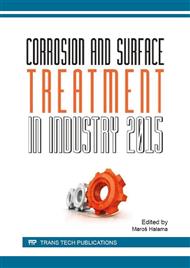p.83
p.89
p.97
p.103
p.106
p.115
p.125
p.133
p.141
Analysis and Comparison of Calculation Methods for Release of Corrosive Gases
Abstract:
The rapid growth in the use of corrosive gases transported by pressure vessels and pipelines has brought significant increase of risk to a number of people, both workers and public, whose life could be endangered at any one time by accident involving these chemicals. Due to the complexity of the involved physical phenomena and to the lack of an adequate amount of reliable experimental data, a number of different models and calculation procedures for estimating the consequences following the release of a corrosive gas are presently reported in the literature. The contribution deals with real scenarios of accidents associated with stationary risk facilities with corrosive flammable toxic chemicals. The study presents the results of hazardous zone calculation for the event of various corrosive liquids (Cl2, NH3, CCl2O, C3H4O) toxic releases. The goal of this article is to present the results of the approach of modeling using the standard methods and to demonstrate the importance of the next development stage in the area of corrosive materials accident modeling of releases and dispersions in cases of accident.
Info:
Periodical:
Pages:
106-112
Citation:
Online since:
March 2016
Price:
Сopyright:
© 2016 Trans Tech Publications Ltd. All Rights Reserved
Share:
Citation:


